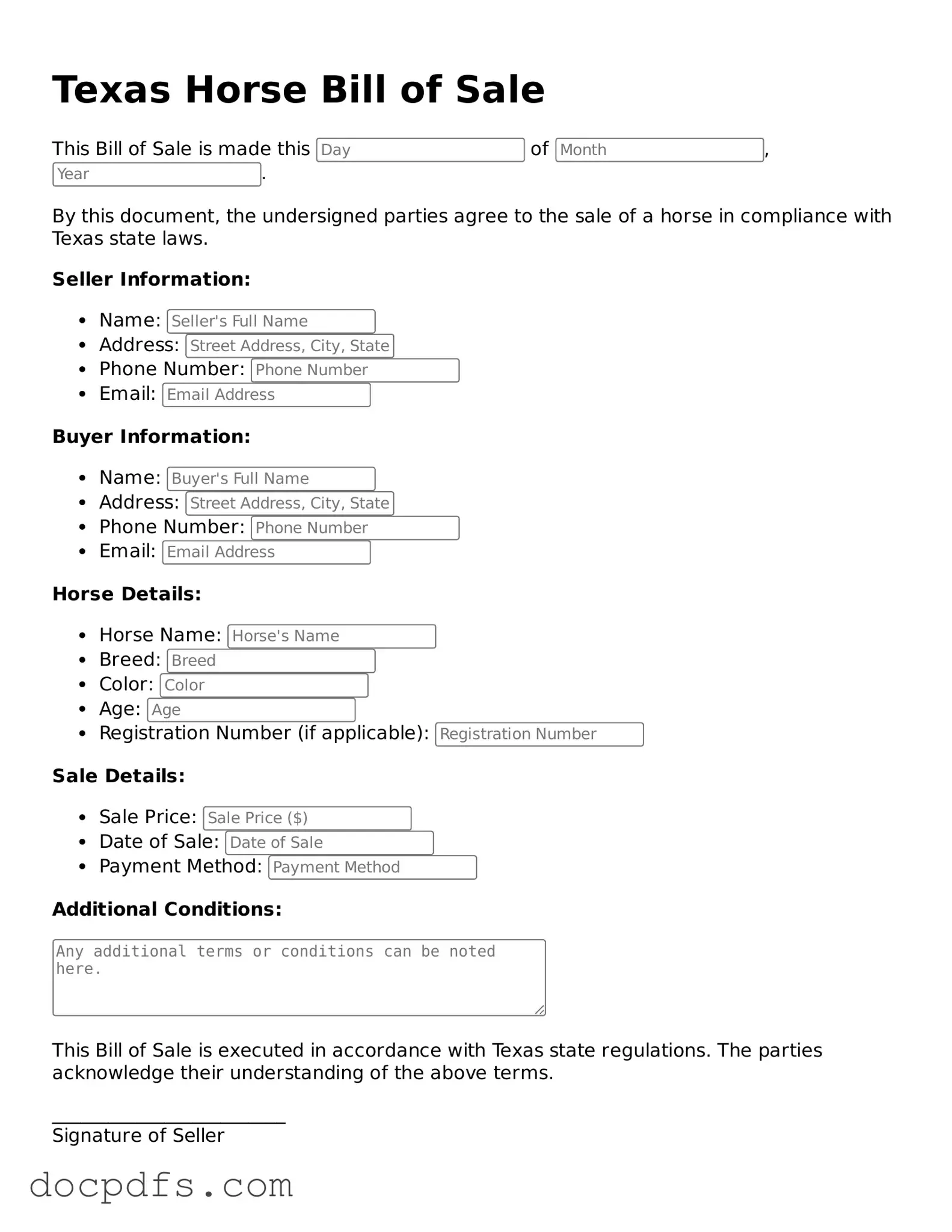What is a Texas Horse Bill of Sale?
A Texas Horse Bill of Sale is a legal document that records the sale of a horse. It serves as proof of the transaction between the seller and the buyer. This document outlines important details about the horse, including its identification, the sale price, and the terms of the sale.
Why is a Bill of Sale important?
A Bill of Sale is important for several reasons:
-
It provides legal protection for both the buyer and seller.
-
It helps establish ownership of the horse.
-
It can be used for future reference or disputes regarding the sale.
-
It may be required for registration with breed associations or for insurance purposes.
The Bill of Sale should include the following information:
-
The names and addresses of both the buyer and seller.
-
A detailed description of the horse, including its breed, age, color, and any identifying marks.
-
The sale price of the horse.
-
The date of the sale.
-
Any warranties or guarantees regarding the horse's health or condition.
Do I need a witness or notary for the Bill of Sale?
While it is not legally required to have a witness or notary for a Texas Horse Bill of Sale, having one can add an extra layer of credibility to the document. A witness can help verify the identities of both parties and the terms of the sale, which may be beneficial if disputes arise in the future.
Can I create my own Bill of Sale?
Yes, you can create your own Bill of Sale. However, it is crucial to ensure that all necessary information is included. Using a template or form that is specifically designed for horse sales can help ensure that you cover all essential details and comply with Texas laws.
What if the horse has health issues?
If the horse has health issues, it is important to disclose this information in the Bill of Sale. Transparency is key in any sale. You may also want to include any warranties or guarantees regarding the horse’s health, or specify that the horse is sold "as is" if you do not want to provide any assurances.
There is no specific format mandated by Texas law for a Bill of Sale. However, it should be clear and organized. Including all relevant information in a logical order will help both parties understand the terms of the sale. It is advisable to keep a copy for your records.
How do I transfer ownership after the sale?
To transfer ownership, the seller should sign the Bill of Sale and provide it to the buyer. The buyer should keep this document as proof of ownership. If the horse is registered with a breed association, you may need to complete additional paperwork to officially transfer the registration to the new owner.
What if there is a dispute after the sale?
If a dispute arises after the sale, the Bill of Sale can serve as a key piece of evidence. It is important to refer to the terms outlined in the document. If necessary, you may need to seek legal advice or mediation to resolve the issue. Keeping clear communication between both parties can often prevent disputes from escalating.
